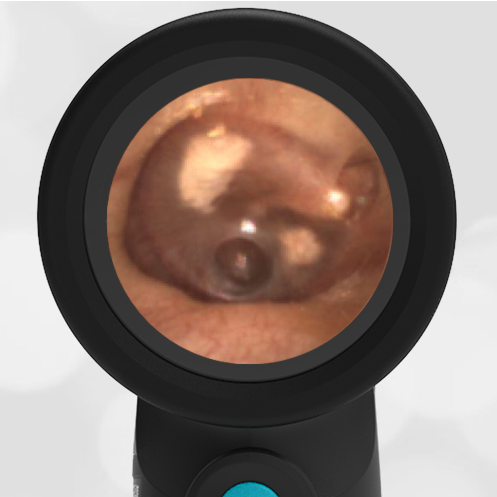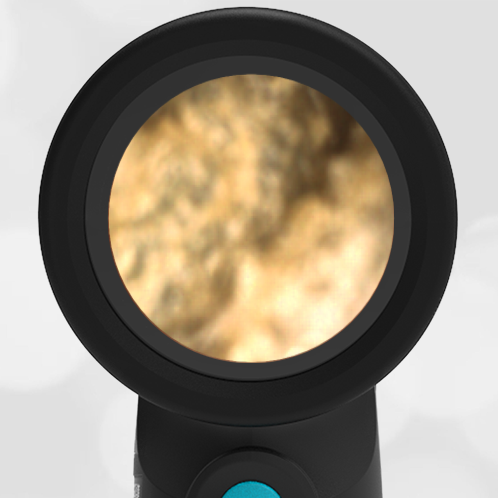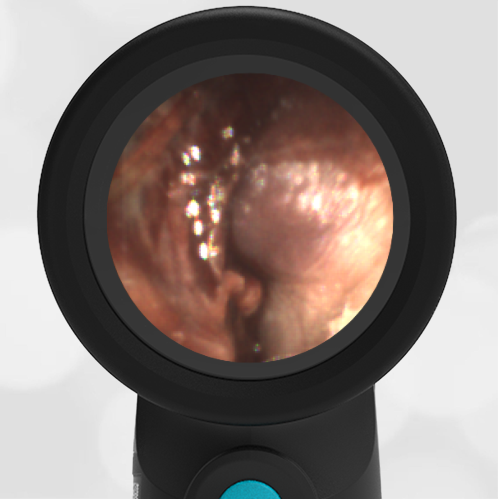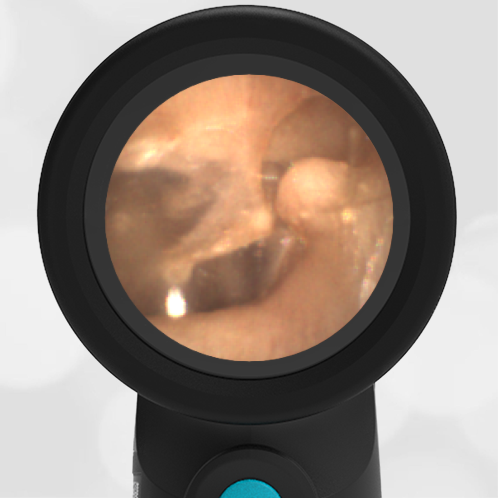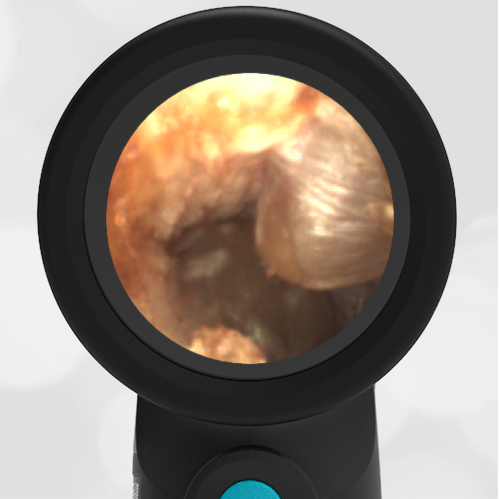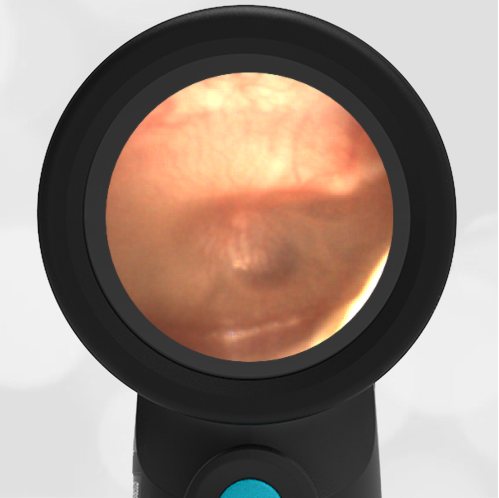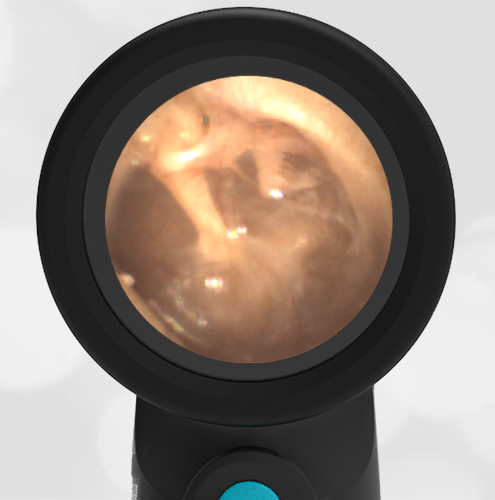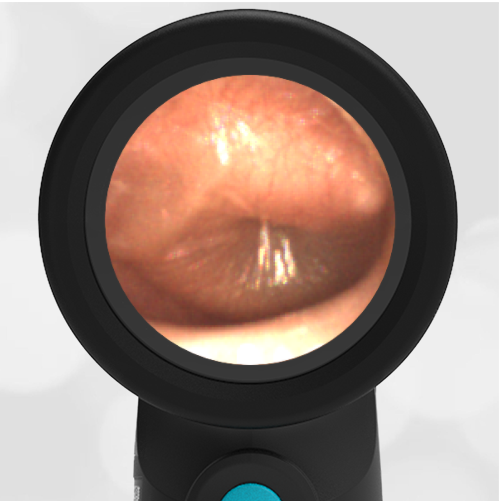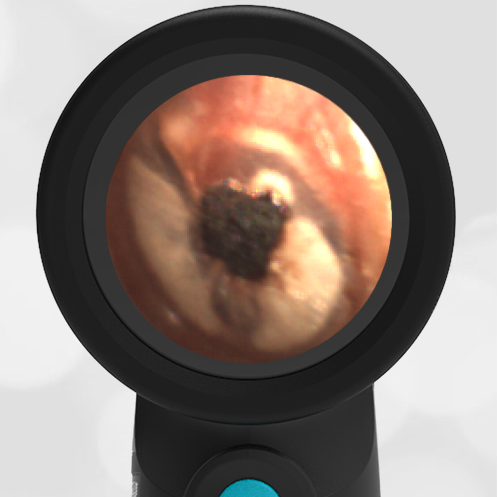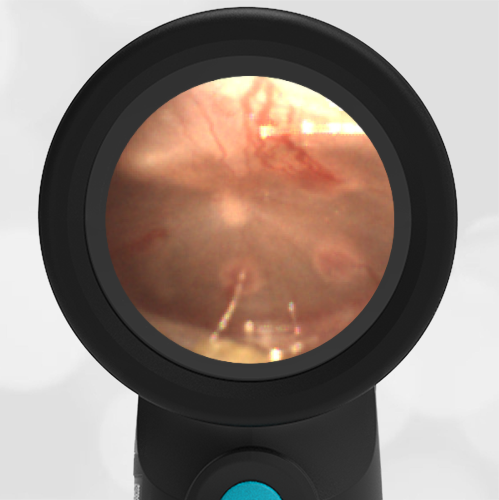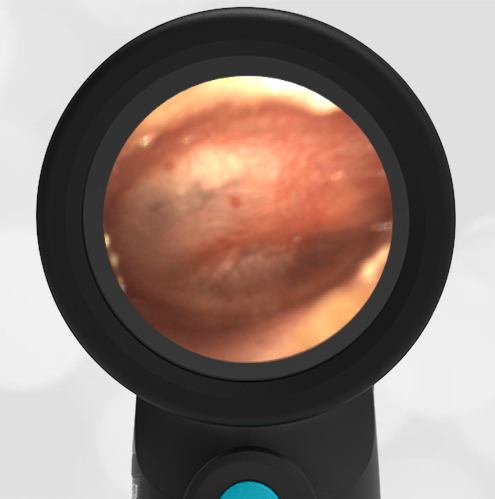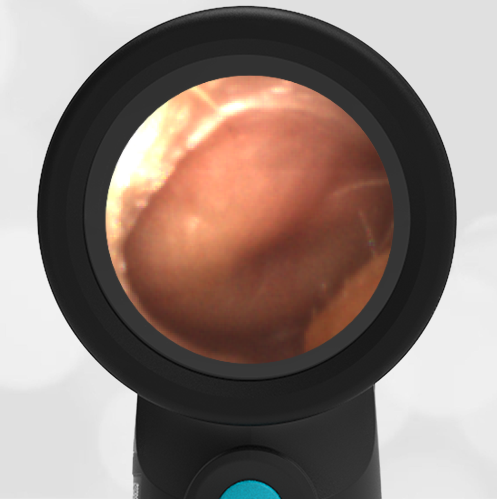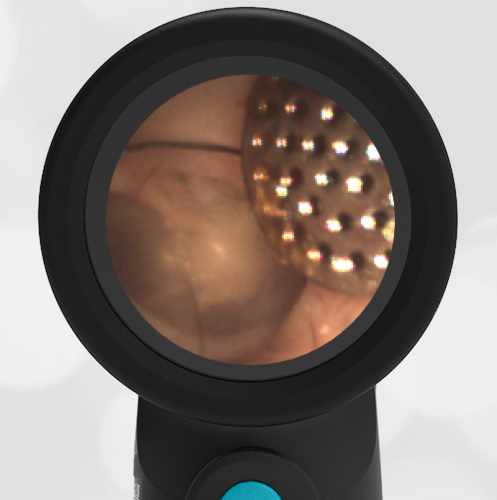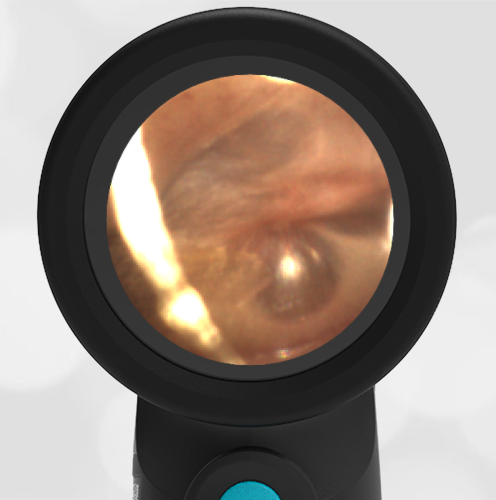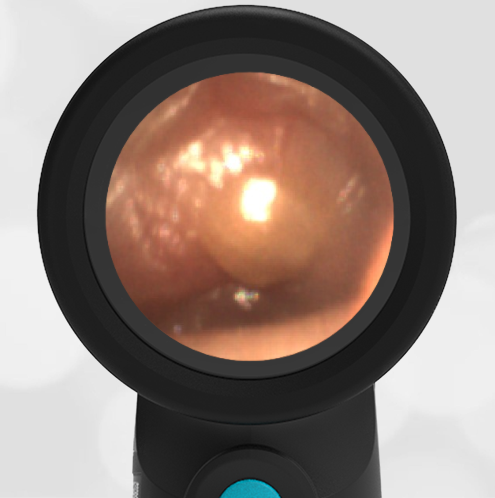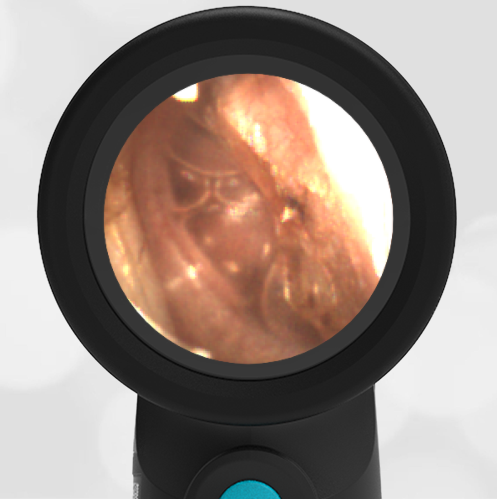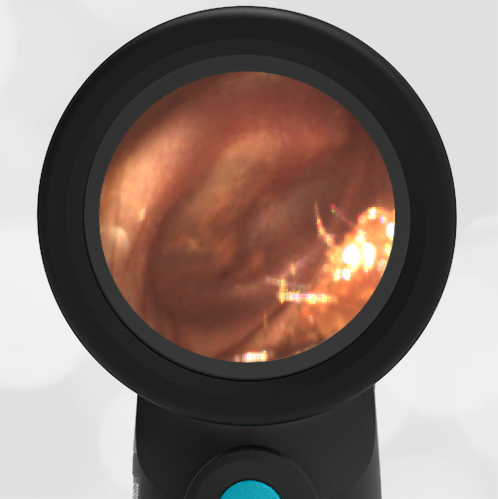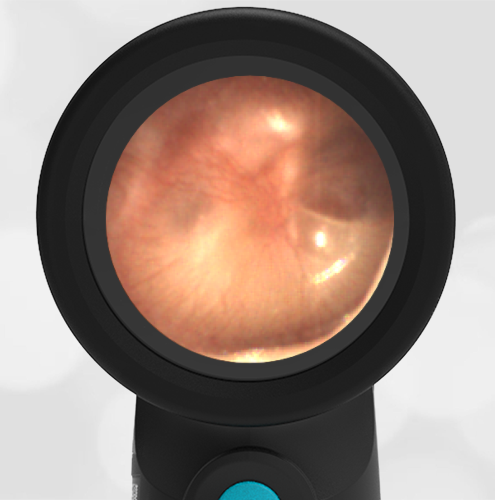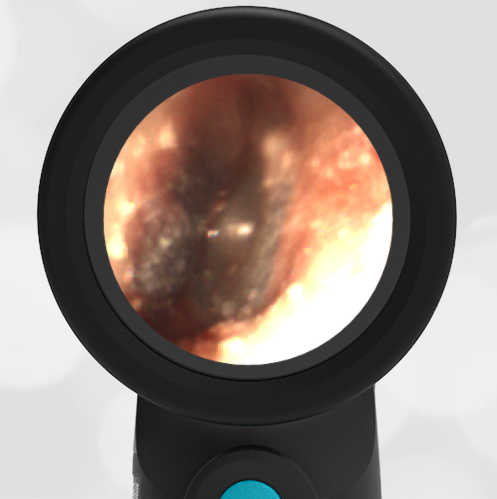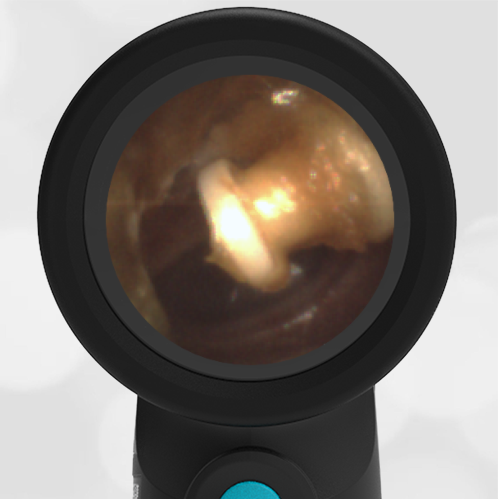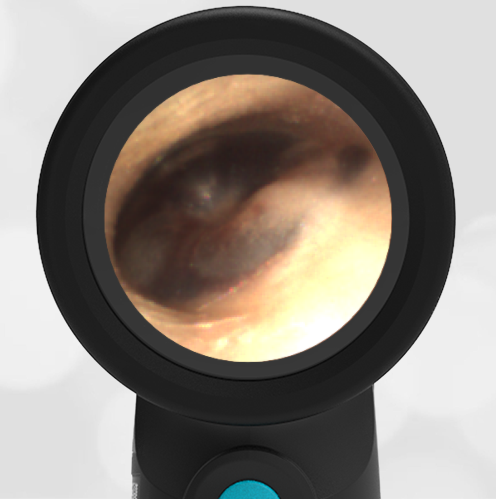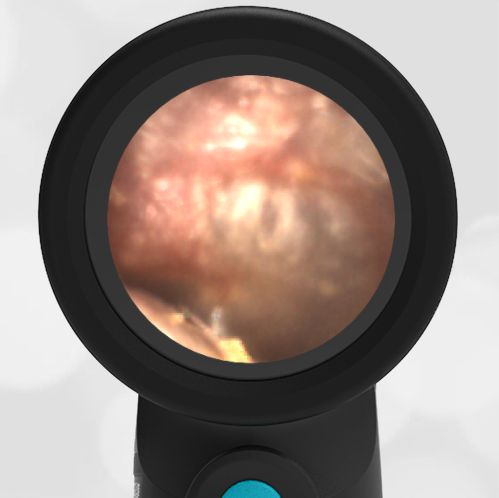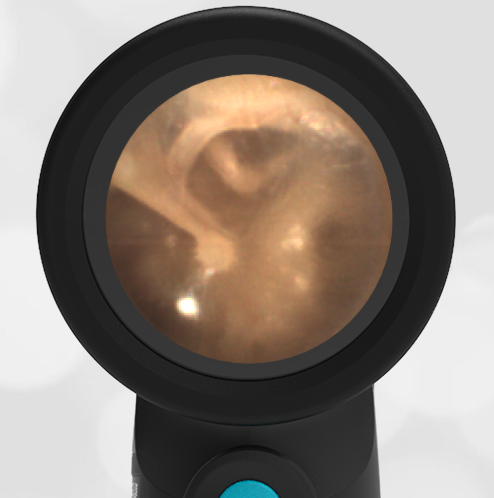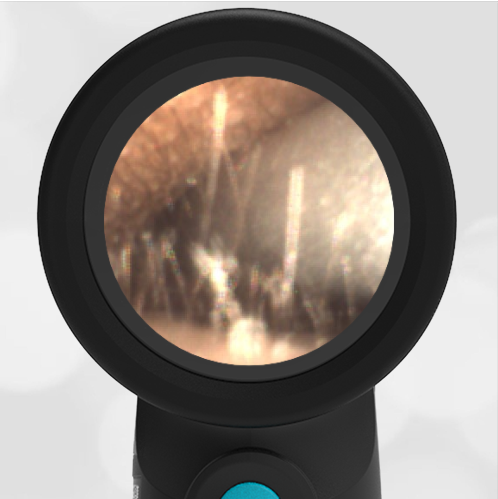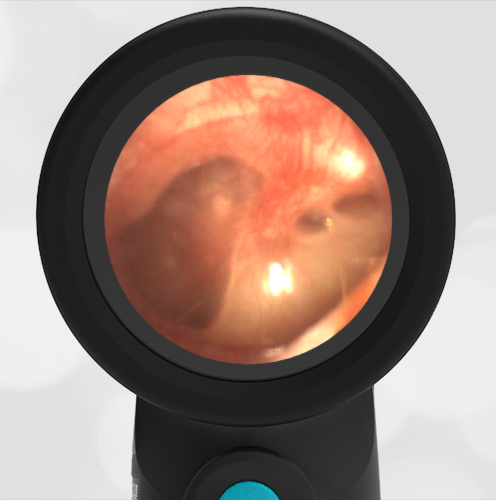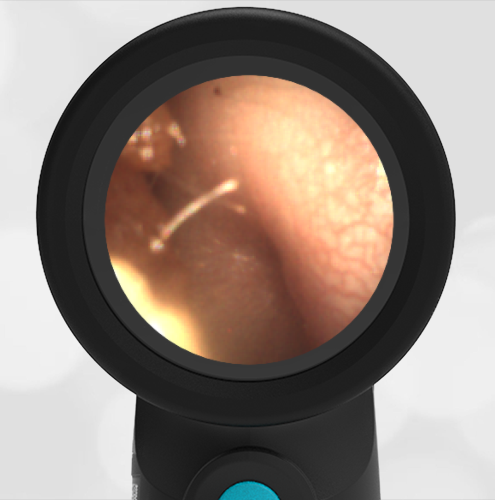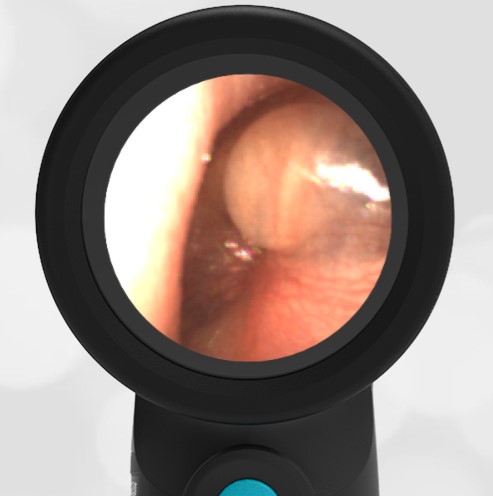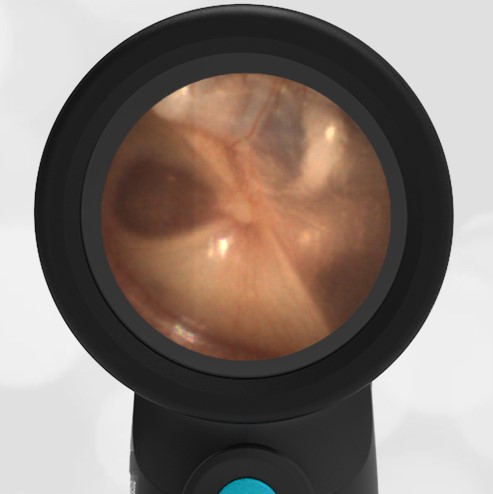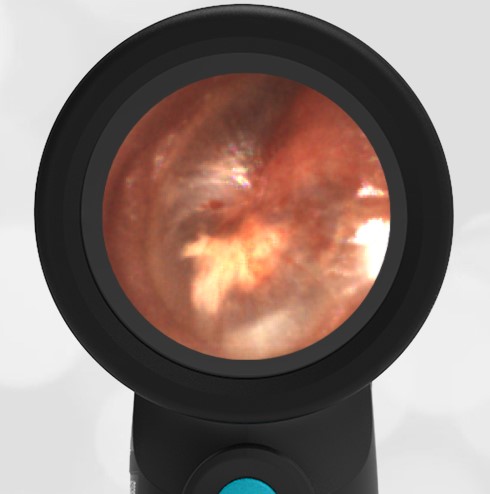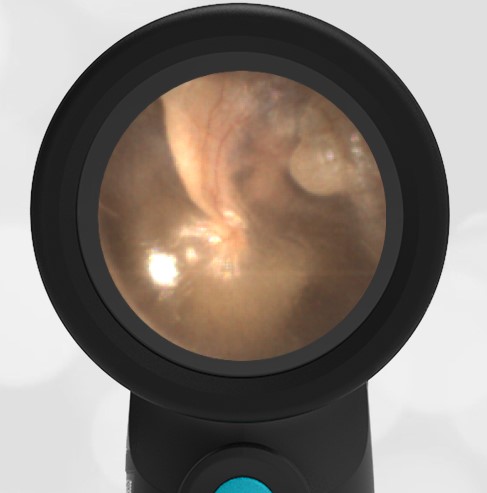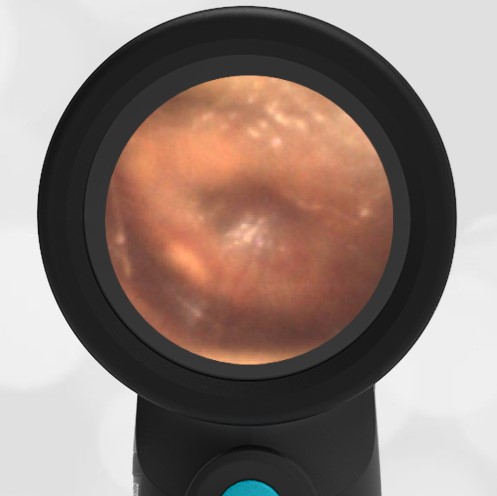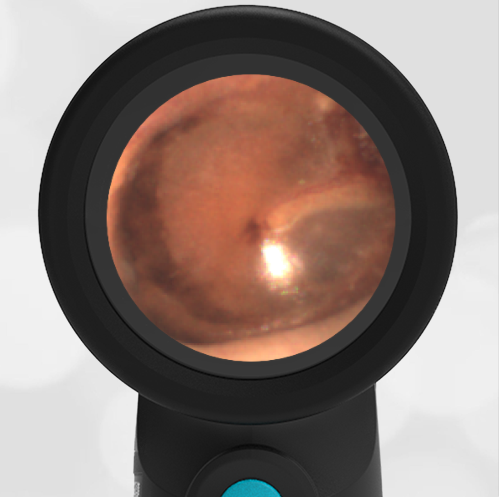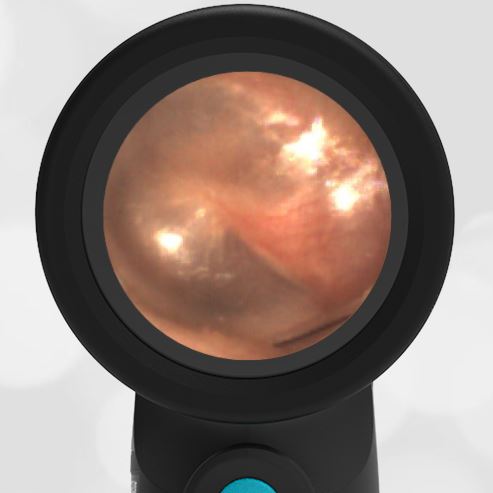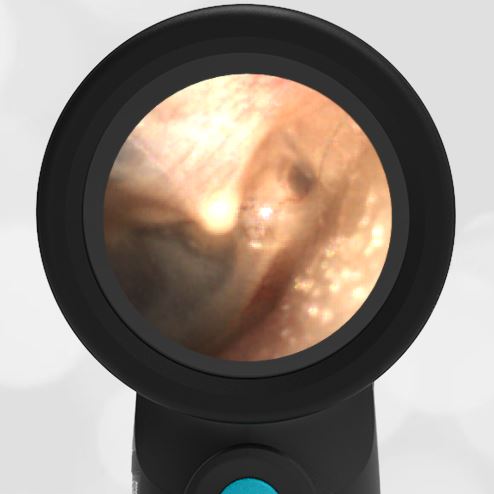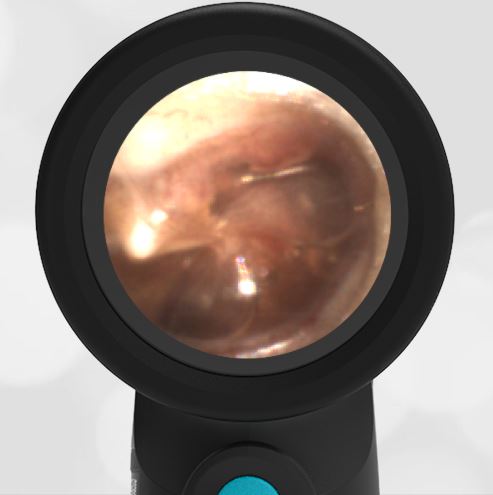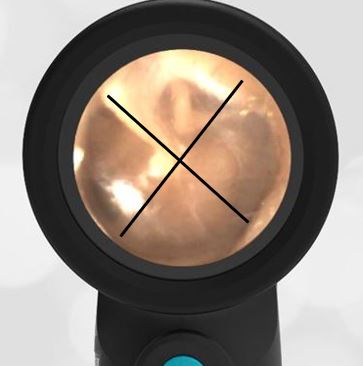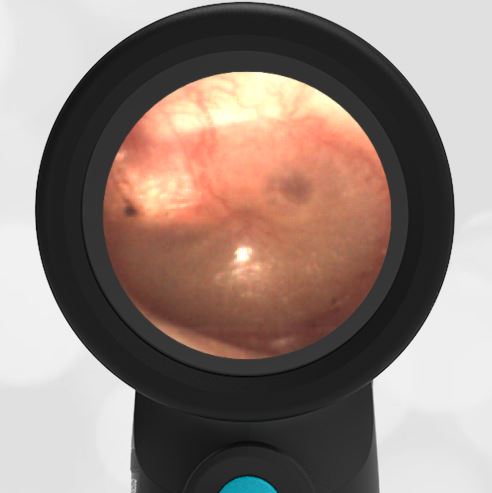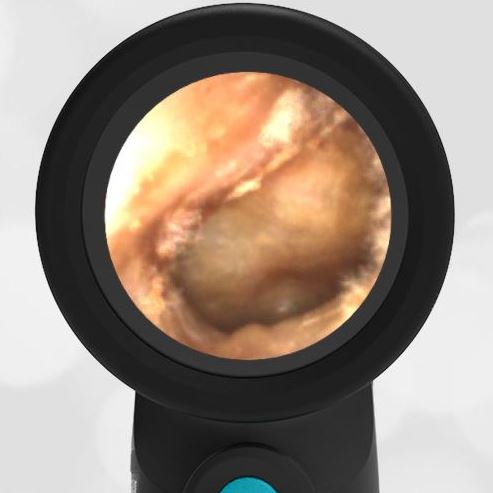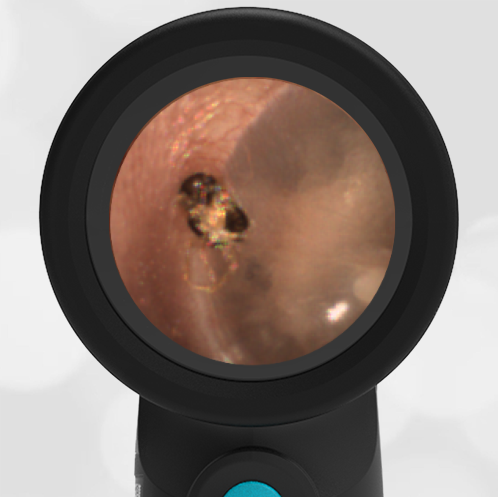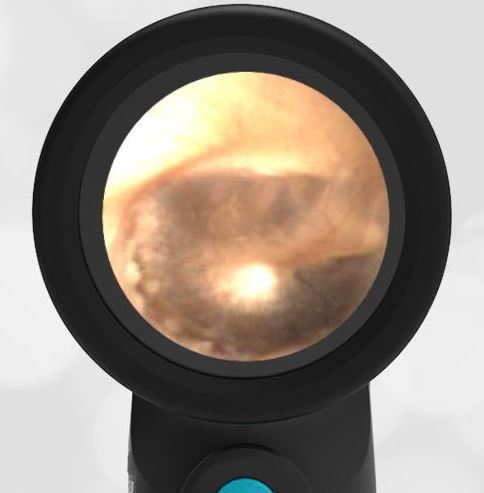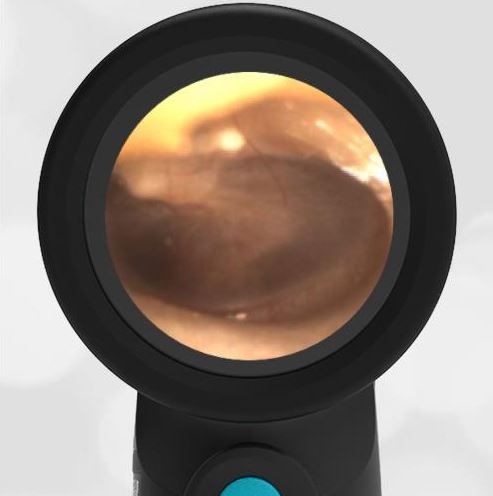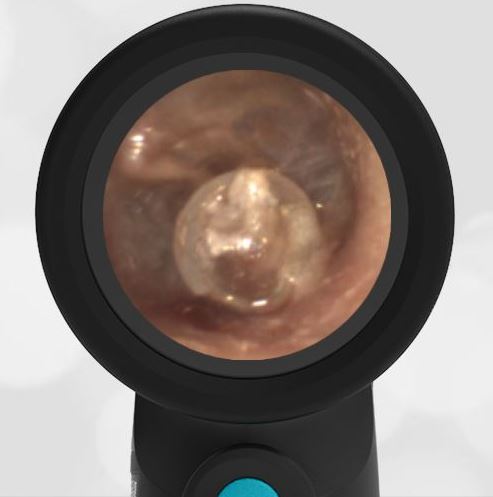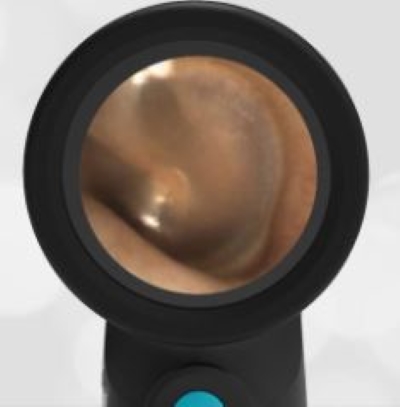
Myringosclerosis – September 12, 2024
A 28-year-old medical student beginning her emergency department (ED) rotation agreed to have her ears examined during otoscopy training. She reports excellent hearing and is in good health.
Her Wispr digital otoscope exam is shown.
Which of the following is likely to be true of her medical history?
- She had frequent exposure to cold water
- She had myringotomy (ear) tubes placed as a young child
- She had surgery to remove a cholesteatoma
- She has had barotrauma
Answer: 2. She had myringotomy (ear) tubes placed as a young child
The Wispr exam reveals impressive myringosclerosis. Myringosclerosis is a build-up of calcium in between the tympanic membrane (TM) layers and is typically asymptomatic without impacting hearing. This contrasts with tympanosclerosis in which calcium deposition also occurs in the middle ear space and may result in conductive hearing deficits. The most common causes of both conditions include recurrent acute otitis media, chronic otitis media with effusion, and surgical placement of myringotomy (ear, ventilation) tubes.
Frequent exposure to cold water results in exostosis, commonly called “surfer’s ear.” A cholesteatoma is a benign growth in the middle ear space that can erode the ossicles and cause hearing loss. The malleus shown in this image is the first of three middle ear ossicles. Baro trauma such as from an explosion causes a rupture in the tympanic membrane. The yellowish-appearing blob in the image is ear wax, known as cerumen.
The medical student in this vignette confirmed her history of recurrent AOM and myringotomy tube placement as a child. She also took images of her tympanic membranes to send to her mother, who she felt would be thrilled to see what she is learning on her Emergency Medicine rotation.
Here is the complete video exam.





